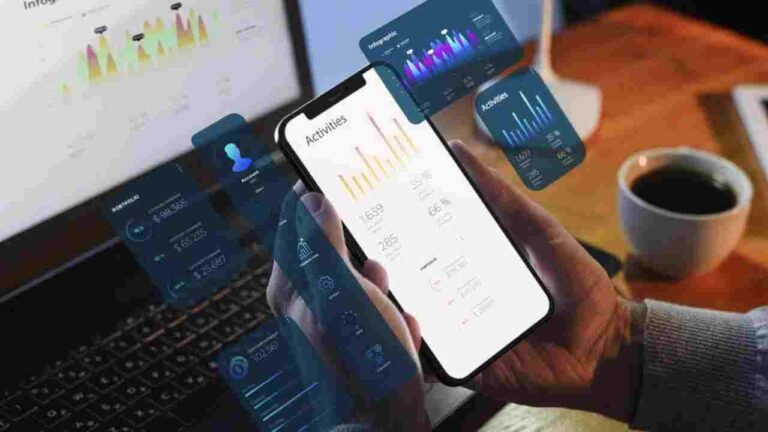Developing mobile applications for both iOS and Android platforms requires a specific set of tools to streamline the development process and ensure a smooth user experience. From integrated development environments (IDEs) to testing tools, there is a wide range of resources available to help you build, test, and deploy your apps.
Whether you are just starting out or are an experienced developer, knowing the right tools for the job can make the development process much more efficient and effective. In this article, we will explore the essential tools every developer needs to build iOS and Android apps, including key development environments, programming languages, libraries, and testing tools.
1. Integrated Development Environments (IDEs)
An IDE is a crucial tool for app development, as it provides developers with everything they need to write, test, and debug code. For iOS and Android app development, there are two primary IDEs that dominate the market.
1.1. Xcode (For iOS Development)
Xcode is the official IDE for developing iOS apps, designed and maintained by Apple. It is the go-to tool for building apps for the iPhone, iPad, Apple Watch, and Mac.
- Features:
- Supports Swift and Objective-C programming languages.
- Built-in Interface Builder for designing UIs.
- Integrated simulator to test apps without needing physical devices.
- Extensive debugging and performance analysis tools.
- Direct deployment to the App Store.
1.2. Android Studio (For Android Development)
Android Studio is the official IDE for Android development, powered by Google. It is designed specifically for Android app development and provides a comprehensive environment for building Android apps.
- Features:
- Supports Java and Kotlin programming languages.
- Android Emulator for testing apps on multiple device configurations.
- Real-time code completion and refactoring tools.
- Integrated tools for building and testing UIs.
- Seamless deployment to Google Play Store.
2. Programming Languages for iOS and Android Development
When it comes to building mobile apps, developers need to be proficient in specific programming languages for each platform. Let’s explore the most popular languages used for iOS and Android development.
2.1. Swift (For iOS)
Swift is Apple’s primary programming language for developing iOS applications. It’s modern, fast, and safe, offering a wide range of features to improve code performance and reliability.
- Why Use Swift:
- Provides high-performance execution.
- More concise and easier to read than Objective-C.
- Interoperates seamlessly with Objective-C for legacy code.
- Rich libraries and resources are available for iOS app development.
2.2. Kotlin (For Android)
Kotlin is the recommended programming language for Android app development, introduced by JetBrains and supported by Google. Kotlin runs on the Java Virtual Machine (JVM) and is fully interoperable with Java, making it an ideal choice for modern Android development.
- Why Use Kotlin:
- Cleaner, more concise code compared to Java.
- Supports null safety, reducing the chance of crashes.
- Fully interoperable with Java codebases, making it easy to integrate into existing projects.
- Strong community support and frequent updates.
2.3. Java (For Android)
Though Kotlin is the preferred language, Java is still widely used for Android development. Java remains a dominant language in Android development due to its long history, established ecosystem, and large developer community.
- Why Use Java:
- Large repository of libraries and frameworks.
- Great documentation and support.
- Widely known, so many developers are familiar with it.
3. Frameworks and Libraries
In addition to core IDEs and programming languages, frameworks and libraries help simplify development by providing pre-built functions and components.
3.1. Flutter (Cross-Platform Development)
Flutter, developed by Google, allows developers to build apps for both iOS and Android from a single codebase. Written in Dart, Flutter is growing in popularity due to its performance and flexibility.
- Why Use Flutter:
- Build cross-platform apps with one codebase.
- Hot-reload feature speeds up development.
- Access to rich widgets for building custom UIs.
- Excellent for performance-intensive apps.
3.2. React Native (Cross-Platform Development)
React Native is another popular cross-platform framework based on JavaScript and React. It allows you to write native apps for both iOS and Android using a single codebase.
- Why Use React Native:
- Write apps using JavaScript, a widely-used language.
- Reusable code across iOS and Android.
- Large ecosystem of libraries and community support.
- Offers near-native performance.
3.3. Alamofire (For iOS)
Alamofire is a powerful Swift-based networking library that simplifies working with APIs and handling HTTP requests in iOS applications.
- Why Use Alamofire:
- Handles network requests and responses in an easy-to-use manner.
- Built specifically for iOS apps using Swift.
- Simplifies working with APIs and JSON parsing.
3.4. Retrofit (For Android)
Retrofit is a popular library for making API calls in Android apps. Written in Java and Kotlin, Retrofit simplifies the process of interacting with REST APIs.
- Why Use Retrofit:
- Simplifies network operations and API integration.
- Converts API responses into Java/Kotlin objects automatically.
- Handles error handling, retries, and logging.
4. Mobile App Testing Tools
Testing is a crucial part of the mobile app development process. Tools for testing ensure that your app performs well and functions as intended across various devices and conditions.
4.1. XCTest (For iOS)
XCTest is the default testing framework for iOS apps, integrated into Xcode. It supports unit testing, UI testing, and performance testing to ensure app quality.
- Why Use XCTest:
- Provides out-of-the-box support for testing iOS apps.
- Integrates directly with Xcode for a smooth testing experience.
- Allows for automated testing of UI components and performance.
4.2. Espresso (For Android)
Espresso is a UI testing tool for Android apps that allows developers to write automated tests for user interactions within their app.
- Why Use Espresso:
- Focuses on testing user interface and interactions.
- Provides fast and reliable automated testing.
- Integrated with Android Studio for ease of use.
4.3. BrowserStack (Cross-Platform Testing)
BrowserStack is an online testing tool that allows developers to test their mobile apps on real devices and browsers across various platforms. It supports both iOS and Android testing.
- Why Use BrowserStack:
- Provides access to a wide range of real devices for testing.
- Cross-platform testing with no need for physical devices.
- Facilitates testing on different screen sizes, OS versions, and resolutions.
4.4. TestFlight (For iOS)
TestFlight is Apple’s official testing platform for iOS apps. It allows you to distribute your app to beta testers before the official release.
- Why Use TestFlight:
- Easy distribution of beta apps to testers.
- Collect feedback from real users before launch.
- Integrated with Xcode for seamless app deployment.
5. App Deployment and Monitoring Tools
Once your app is ready, deployment and ongoing monitoring become crucial for ensuring its success.
5.1. Firebase (For Both iOS and Android)
Firebase is a platform by Google that provides a variety of tools for app development, including real-time databases, analytics, and app performance monitoring.
- Why Use Firebase:
- Real-time database and cloud storage.
- Integrated Crashlytics for crash reporting.
- Easy authentication for users.
5.2. App Store Connect (For iOS)
App Store Connect is the platform used to manage and submit your iOS app to the Apple App Store. It allows you to manage app releases, updates, and track app performance metrics.
- Why Use App Store Connect:
- Manage app submission and updates.
- Track app performance with analytics.
- Respond to user feedback and reviews.
5.3. Google Play Console (For Android)
Google Play Console is used for managing and submitting Android apps to the Google Play Store. It provides tools for tracking app performance, user reviews, and app statistics.
- Why Use Google Play Console:
- Submit, manage, and update your Android app.
- Access analytics and user engagement data.
- Handle app ratings and reviews.
6. Conclusion
Building mobile apps for iOS and Android requires a combination of the right tools, knowledge, and expertise. Whether you are building native apps or cross-platform solutions, the tools listed above—such as Xcode, Android Studio, React Native, Flutter, and testing tools like XCTest and Espresso—will help streamline your development process and ensure your app performs well.
By choosing the right set of tools, you can significantly enhance your app’s functionality, user experience, and overall quality. Whether you are a beginner or an experienced developer, investing in the best tools for mobile app development is essential for creating successful mobile applications.

